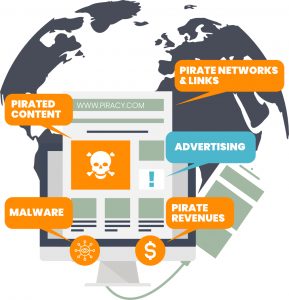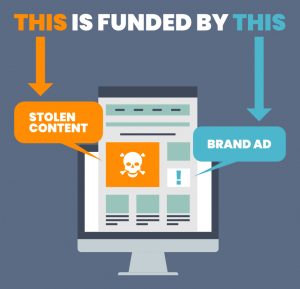
Peter Szyszko

With close to a billion dollars in advertising revenue found to be going to pirate websites each year, brand marketers need to understand the risk of associating with piracy and get wise to the tactics used by these online fraudsters.
Digital piracy is now happening on a scale like never before.
Ads from household-name brands are alarmingly common on pirate websites, pouring millions of dollars into this illegal ecosystem. On top of this, premium brands are increasingly advertising with pirate mobile platforms, including over-the-top media streaming (OTT) and connected TV. Ads from premium brands are up to four times more prevalent in the mobile space.
Brands cannot associate or risk appearing next to pirate content. Not only does an ad on a pirate publisher associate the brand directly with this illegal activity, but brands are also funding criminals. Enforcement units such as the City of London Police Intellectual Property Crime Unit (PIPCU) have been actively reaching out to brands for some time with positive results.

Piracy is continuously evolving to trick brands into thinking they are advertising on safe websites. At least half of pirate websites change their status, domain or name in a month to confuse advertising technology and get around the concept of static blocklists. Others masquerade as innocent content providers, and inject pirate streams only at specific times to distribute live events, posting links in social media to drive traffic and awareness.
Properly assessing content and understanding evolving piracy threats is limited due to time, resource, and expertise – piracy, in particular, requires an understanding of which content infringes intellectual property rights and the infrastructure that supports it technically and financially.
Rigorous assessment of data and adequate due diligence is critical. Brands need truly dynamic safeguards. Static lists won’t help because pirates move around constantly to intercept ad budgets. In the face of this evolving threat, made worse by modern ad trading methods, it’s more important than ever that marketers don’t depend on inadequate or excessively manual brand safety tools and checks to protect themselves.
As close to a billion dollars a year in brand ad spend funds piracy, current light-touch supervision for such a large-scale challenge is insufficient. What brands need is expert, transparent data in real-time to stop spending money to put themselves at risk.

Brands need to wake up to the shape-shifting nature of piracy. To do so requires staying up-to-date in real-time – no easy task.
Fortunately, today, AI is here to help. Brands can identify pirate sites in real-time and even avoid bidding on them. Brands can also track revenues lost and reverse this growing problem with data science and technology. In so doing, brands will be employing robust brand safety processes, so protecting their reputations. At the same time, brands reap financial rewards, saving millions, which brands would otherwise lose to bad actors on the worldwide web.
Indeed, tracking the financial impact of piracy can show how worthwhile appropriate brand safety efforts are. For instance, White Bullet has helped over 3,000 brands avoid funding piracy, saving them a whopping £44 million.
Marketers go to great lengths – and pay vast sums – to ensure their brand is associated with suitable content. Alongside sexually explicit content, disinformation, malware, hate speech and other undesirable content, piracy is unsuitable and unsafe.